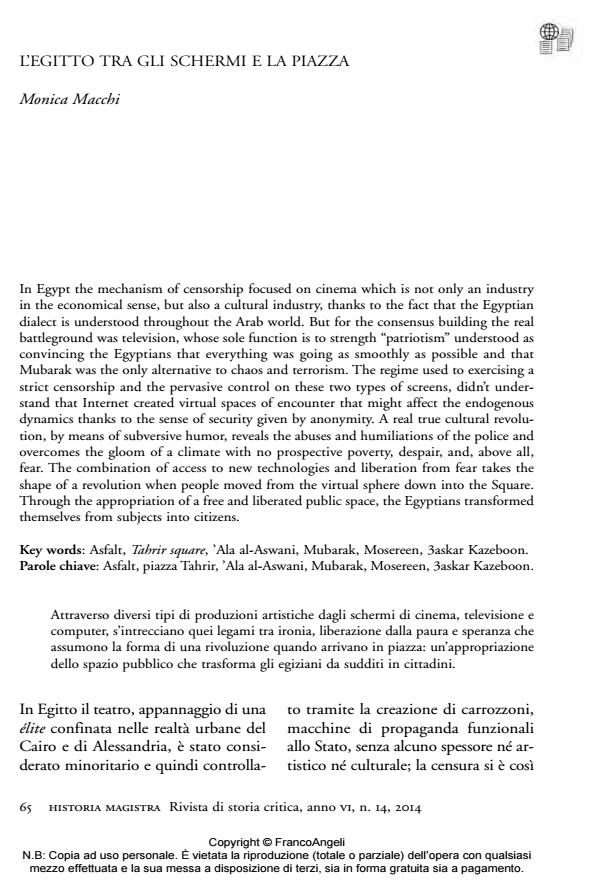L’Egitto tra gli Schermi e la Piazza
Journal title HISTORIA MAGISTRA
Author/s Monica Macchi
Publishing Year 2014 Issue 2014/14
Language Italian Pages 11 P. 65-75 File size 290 KB
DOI 10.3280/HM2014-014008
DOI is like a bar code for intellectual property: to have more infomation
click here
Below, you can see the article first page
If you want to buy this article in PDF format, you can do it, following the instructions to buy download credits

FrancoAngeli is member of Publishers International Linking Association, Inc (PILA), a not-for-profit association which run the CrossRef service enabling links to and from online scholarly content.
In Egypt the mechanism of censorship focused on cinema which is not only an industryin the economical sense, but also a cultural industry, thanks to the fact that the Egyptiandialect is understood throughout the Arab world. But for the consensus building the realbattleground was television, whose sole function is to strength "patriotism" understood asconvincing the Egyptians that everything was going as smoothly as possible and thatMubarak was the only alternative to chaos and terrorism. The regime used to exercising astrict censorship and the pervasive control on these two types of screens, didn’t understandthat Internet created virtual spaces of encounter that might affect the endogenousdynamics thanks to the sense of security given by anonymity. A real true cultural revolution,by means of subversive humor, reveals the abuses and humiliations of the police andovercomes the gloom of a climate with no prospective poverty, despair, and, above all,fear. The combination of access to new technologies and liberation from fear takes theshape of a revolution when people moved from the virtual sphere down into the Square.Through the appropriation of a free and liberated public space, the Egyptians transformedthemselves from subjects into citizens.
Keywords: Asfalt, Tahrir square, ’Ala al-Aswani, Mubarak, Mosereen, 3askar Kazeboon.
Monica Macchi, L’Egitto tra gli Schermi e la Piazza in "HISTORIA MAGISTRA" 14/2014, pp 65-75, DOI: 10.3280/HM2014-014008